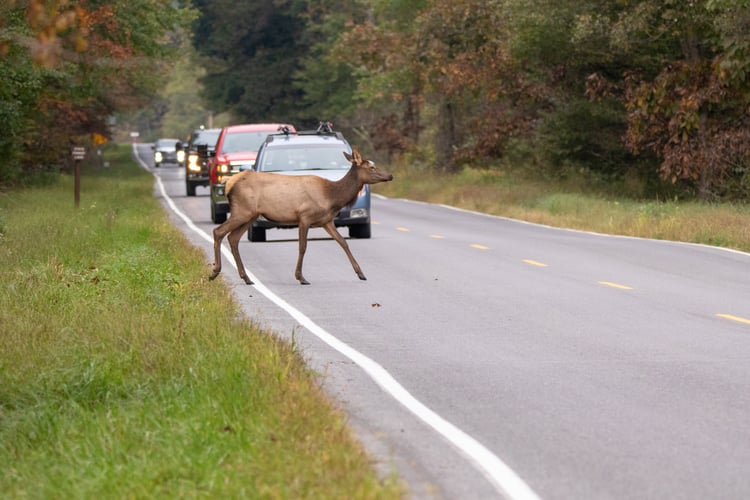Why did the wild animal cross the road? The answer; to migrate, collect food or respond to habitat stresses! Unfortunately, crossing a road is not a simple task or a punchline to a joke for wildlife. Roads create “fragments” in ecosystems, interrupting the movement of animals. Elk and deer will travel to higher altitudes starting in late spring and will return to lower altitudes starting in late fall to seek more moderate temperatures. Squirrels and other smaller animals travel frequently in response to habitat stresses or in search of food. Movement is key to survival for animals and this means crossing treacherous roads. September 25th is National Roadkill Day, a reminder to take action to prevent animal deaths on our roadways.
Over one million animals are killed in the United States each year in road accidents. I-70 is one of the deadliest roads for wildlife in Colorado. The interstate crosses through a variety of habitats and puts animals of all kinds in danger. Furthermore, animal-vehicle collisions can injure drivers and passengers as well as lead to costly damage. As we transition into fall, we will see more animals on the road migrating in preparation for winter. Given this extra seasonal risk, how can we mitigate animal-car collisions?

Cow elk crossing the road photo by Don Mcroczkowski.
The best way is almost too obvious: not driving. During stay-at-home orders in 2020, thousands of animal lives were saved due to less cars on the road. Understanding that is not always possible, Colorado Parks and Wildlife recommends several basic principles for preventing wildlife collisions:
1. Drive slowly to increase your reaction time
2. Remain alert during dawn and dusk
3. Scan ahead for movement along roadsides and for shining eyes in headlights at night
4. Remember that if you see one animal, there may be more
5. Watch for wildlife crossing signs
If you encounter large game on the road, the insurance company, Geico, recommends to brake firmly and calmly without swerving and to honk your horn to avoid collision.
In addition to driving less and driving cautiously, implementing preventative infrastructure reduces collisions by blocking animals from entering busy roads and re-directing them to safe passage. As of 2019, Colorado Department of Transportation has installed 410 miles of wildlife fencing. This prevents wildlife from entering the road and is even more effective when used in tandem with other infrastructure. Wildlife escape ramps are often on the roadside alongside fencing; several are on I-70 near Eagle. This way, if animals are stuck on the highway on the inside of fencing, they will be able to escape by running up the ramp and away from the road, but not the other way around.
Using just fencing and escape ramps can severely limit wildlife mobility. Wildlife overpasses and underpasses are also important as they allow animals to safely cross highways. However, they are expensive and a pass that works for one animal may not work for another. Thus, using data to determine where “roadkill hotspots” and migration corridors are is crucial when deciding where to install infrastructure. For example, East Vail Pass is one of the most important migration corridors in Colorado, and the Colorado Corridors Project is advocating for one overpass and two underpasses in this area.
Just as there is no single answer to the question of why the animal crossed the road; there is no one answer to solving vehicle-wildlife collisions on our roadways. Improved infrastructure, driving less and safe driving practices are all important. Next time you hop in your car, remember that our roads are shared spaces that do not exist in a bubble. Let’s make our roads safer places for people and for wildlife.
Gabi Watkins is a naturalist at Walking Mountains Science Center who would most likely cry if any forest friend ended up under her car tire.







